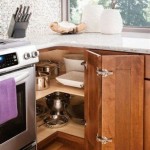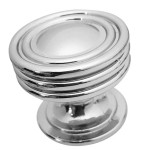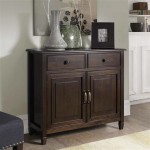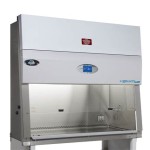Kitchens With 2 Colors Of Cabinets: A Comprehensive Guide
The two-toned kitchen cabinet design is a popular trend in modern interior design, offering a dynamic and personalized aesthetic. This design strategy involves using two different colors for cabinets, creating visual interest and allowing for a more nuanced approach to kitchen styling. It moves away from the uniformity of single-color cabinetry, providing opportunities to highlight specific areas, enhance the room's architecture, and reflect individual preferences.
The trend is not merely about aesthetics; it allows for functional zoning within the kitchen. Darker hues can ground the lower cabinets, providing a sense of stability, while lighter shades on the upper cabinets can create an airy and spacious feel. The contrasting colors can also guide the eye, drawing attention to architectural features or creating focal points within the kitchen space.
Successfully implementing a two-toned kitchen requires careful consideration of several factors. These include the existing architectural style, the available natural light, and the overall color palette of the home. The selection of cabinet colors should be complementary, creating a harmonious balance rather than a jarring contrast. Thoughtful planning is essential for achieving a cohesive and visually appealing kitchen design.
Key Considerations for Implementing a Two-Toned Kitchen
Several key factors influence the success of a two-toned kitchen cabinet design. Understanding these elements is crucial for creating a space that is both visually appealing and functionally efficient.
Color Selection and Harmony: Choosing the right color combination is paramount. The colors should complement each other, creating a sense of balance and visual harmony. Consider the existing color palette of the kitchen, including the countertops, flooring, and backsplash. Neutrals like white, gray, and beige are versatile and can be paired with bolder colors to create a sophisticated look. Alternatively, contrasting colors can be used to make a statement, but it's essential to ensure that the contrast is balanced and doesn't overwhelm the space. Using a color wheel can be beneficial in selecting harmonious color combinations.
Cabinet Placement and Hierarchy: The placement of the two colors is critical in establishing visual hierarchy. The most common approach is to use darker colors on the lower cabinets and lighter colors on the upper cabinets. This design choice grounds the space and creates a sense of spaciousness. Alternatively, the island can be a different color than the perimeter cabinets, creating a focal point. Highlight architectural features by using a contrasting color on cabinets surrounding a window or range hood. The placement should guide the eye and create a balanced composition within the kitchen.
Material and Finish Consistency: While using two different colors, maintaining consistency in material and finish is crucial for creating a cohesive look. Using the same type of wood, laminate, or paint finish will ensure that the cabinets appear to be part of a unified design. Mixing materials and finishes can be visually jarring and detract from the overall aesthetic. Consider the texture of the cabinets as well. Pairing a glossy finish with a matte finish can add depth and interest, but it should be done thoughtfully and with careful consideration of the overall design.
Lighting and Ambiance: The amount of natural and artificial light in the kitchen plays a significant role in how the colors appear. Darker colors can absorb light, making the space feel smaller and more enclosed. Lighter colors reflect light, making the space feel brighter and more spacious. Consider the orientation of the kitchen and the amount of natural light it receives when selecting colors. Incorporate adequate lighting to enhance the colors and create a welcoming ambiance. Under-cabinet lighting can accentuate the colors of the upper cabinets, while pendant lights can highlight the island or peninsula.
Architectural Style and Integration: The chosen color scheme should complement the overall architectural style of the home. A modern kitchen might benefit from a sleek and minimalist color palette, while a traditional kitchen might call for warmer and more classic colors. Consider the existing architectural features, such as moldings, trim, and flooring, when selecting colors. The goal is to create a cohesive and integrated design that flows seamlessly with the rest of the home. For example, in a farmhouse-style kitchen, a combination of white upper cabinets and a natural wood finish on the lower cabinets can create a warm and inviting atmosphere.
Popular Two-Toned Cabinet Color Combinations
Several color combinations are commonly used in two-toned kitchen designs. These combinations offer a range of aesthetic possibilities, from classic and timeless to bold and contemporary.
White and Gray: This is a classic and versatile combination that works well in a variety of kitchen styles. White upper cabinets create a sense of spaciousness, while gray lower cabinets ground the space and add a touch of sophistication. Different shades of gray can be used to create a subtle or dramatic contrast. This combination pairs well with stainless steel appliances and quartz countertops.
White and Navy Blue: This combination is a popular choice for coastal and nautical-themed kitchens. White upper cabinets create a bright and airy feel, while navy blue lower cabinets add a pop of color and create a focal point. This combination pairs well with brass hardware and butcher block countertops.
White and Natural Wood: This combination is a timeless classic that works well in a variety of kitchen styles, from farmhouse to modern. White upper cabinets create a sense of brightness, while natural wood lower cabinets add warmth and texture. Different types of wood can be used to create a subtle or dramatic contrast. This combination pairs well with stone countertops and rustic hardware.
Black and White: This combination is a bold and dramatic choice that works well in modern and contemporary kitchens. Black lower cabinets add a touch of sophistication and grounding, while white upper cabinets create a sense of spaciousness and brightness. This combination pairs well with stainless steel appliances and marble countertops.
Green and White: This combination brings a touch of nature indoors. Different shades of green can be used, from a soft sage to a deep emerald. White uppers will ensure the space stays bright and airy while complementing the earthiness of the green shades. This selection pairs well with natural materials like wood and stone.
Gray and Wood Tones: This combination brings warmth and sophistication to the kitchen. Combining different shades of grey which is calming with vibrant and warm wood tones makes the kitchen space very welcoming.
Practical Applications and Design Considerations
Beyond aesthetics, the two-toned cabinet design can be strategically applied to address specific design challenges and enhance the functionality of the kitchen.
Highlighting Architectural Features: Two-toned cabinets can be used to draw attention to specific architectural features, such as a window, range hood, or built-in shelving. By using a contrasting color on the cabinets surrounding these features, they can be visually emphasized, creating a focal point within the kitchen.
Defining Zones and Functions: The kitchen can be divided into different zones based on function, such as cooking, prep, and cleanup. Two-toned cabinets can be used to visually define these zones, creating a sense of organization and efficiency. For example, the cooking zone can be distinguished by using a specific color on the cabinets surrounding the range or cooktop.
Creating Visual Interest in Small Kitchens: In smaller kitchens, two-toned cabinets can be used to create a sense of depth and visual interest. Using lighter colors on the upper cabinets and darker colors on the lower cabinets can make the space feel more spacious and airy. The contrast can also draw the eye upward, creating a sense of height.
Personalizing the Kitchen Design: Two-toned cabinets offer a unique opportunity to personalize the kitchen design and reflect individual preferences. The color combinations can be tailored to match the homeowner's style and personality. This allows for a more customized and unique kitchen space.
Balancing Light and Shadow: In spaces with abundant natural light, darker cabinet colors can be used to balance the brightness and create a more grounded feel. Conversely, in spaces with limited natural light, lighter cabinet colors can be used to maximize the light and make the space feel more open and airy. The choice of colors should be carefully considered based on the amount of natural light available in the kitchen.
Ultimately, the successful implementation of a two-toned kitchen cabinet design requires careful planning, attention to detail, and a clear understanding of the design principles involved. By considering the factors outlined above, it is possible to create a kitchen that is both visually stunning and functionally efficient, reflecting individual style and enhancing the overall living experience.

18 Examples Of Two Toned Kitchen Cabinets From Designers
:strip_icc()/goldalamodetwotoned-7898e45ce4004aec878721b187b98301.jpeg?strip=all)
30 Stylish Two Toned Kitchen Ideas From An Expert

Design Inspiration Tips For Two Tone Kitchen Cabinets Hirshfield S
:strip_icc()/cdn.cliqueinc.com__cache__posts__250323__two-toned-kitchen-cabinets-250323-1519416360278-main.700x0c-053dda2f27cc41c18d2f5d3aaef8660b-22a98f743a9e480ab9869a2e5cf6d3a0.jpg?strip=all)
30 Stylish Two Toned Kitchen Ideas From An Expert

10 Two Tone Kitchen Cabinet Ideas 2025 Mix And Match

Design Inspiration Tips For Two Tone Kitchen Cabinets Hirshfield S

26 Two Tone Kitchen Cabinet Ideas That Make A Dazzling Duo

Can You Paint Kitchen Cabinets Two Colors In A Small The Decorologist

Using Color For Eye Catching Two Tone Kitchen Cabinets

Design Inspiration Tips For Two Tone Kitchen Cabinets Hirshfield S








